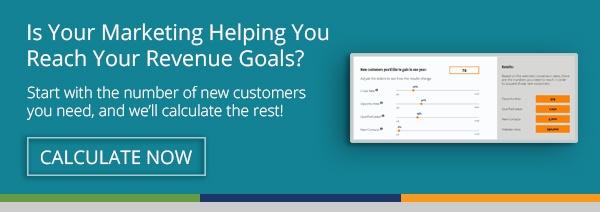Sales and marketing alignment is more important than ever before. If you're already on board with this notion, feel free to skip this intro (or simply read on for a few powerful stats).
However, if your sales and marketing teams are not working in harmony, here is some convincing data—accompanied by an entire SlideShare presentation—on why not aligning and automating your sales and marketing activities is costing you loads of money...
- Misalignment between sales and marketing technologies and processes costs B2B companies 10% of revenue or more per year.
- Companies with good "smarketing" (sales and marketing) practices in place generate 208% more revenue from marketing efforts.
- When sales and marketing teams work together, companies see 36% higher customer retention and 38% higher sales win rates.
Convinced yet? Okay!
But what are the next steps? How exactly do you leverage automation to align your marketing and sales departments? For HubSpot users, this is easy!
In this practical, straight-forward post, we outline the multiple HubSpot features available to make it easier for your teams to communicate—and work together to nurture and close quality leads using the HubSpot platform.
Preparing Your Sales Team for Success
Lead Scoring
One way to ensure you’re sending Sales high-quality leads, and not just everyone who converts on your website, is to leverage the Lead Scoring tool. This feature allows Marketing to assign both positive and negative points to contact properties, behaviors, firmographics, and more that sum up to their HubSpot Score (a.k.a. lead score).
Using workflows, you can then set the HubSpot Score threshold that determines when a lead is considered Marketing Qualified (MQL) or Sales Qualified (SQL) and send an automated internal email to Sales for the leads that should be looked into by their team.
The tool looks like this:
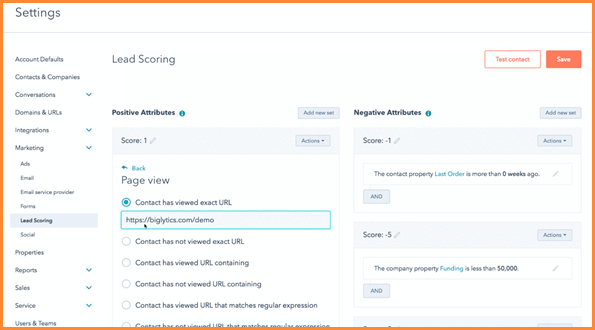
As you can see, you can add or delete points based on a contact's page views, information they provide when they submit a form, or a wide variety of other collected data.
We recommend that you start simple and refine the scoring on a monthly basis. However, it's critical that both Sales and Marketing work together to define the initial criteria and lifecycle stage definitions. Then both parties should commit to attending a monthly meeting where the leads Marketing has passed on to Sales are reviewed (and then the scoring can be adjusted based on impactful trends).
If you'd like a more detailed guide to Lead Scoring, we've already written a comprehensive post called The Savvy Marketer's Guide to Tackling HubSpot Lead Scoring that's chock full of best practices and advice.
Notifications to Lead Owners
When a lead is qualified and ready to go to your Sales team, don’t just send them a notification with the lead's name and contact info. Give your reps all of the data they need to have a successful first conversation—by including personalization tokens in the internal email that populate based on information from the lead's contact record.
From resources the leads downloaded, to the pages they visited, to questions they answered on forms, as well as information about their organizations that's automatically pulled by HubSpot, you can paint a nice picture of their journeys down the marketing funnel and how interested they are in your business. Here's an example:
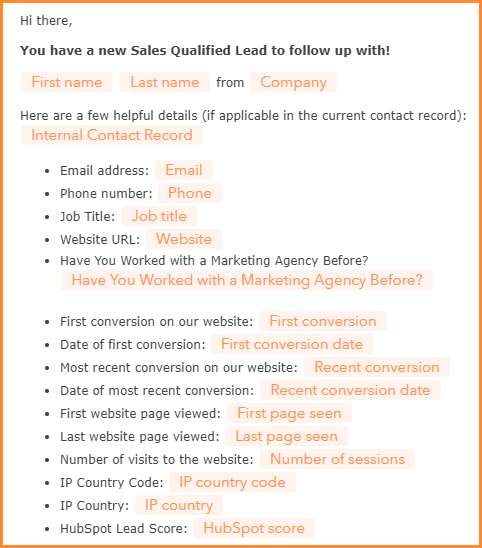
You can use the HubSpot Workflows tool to create an internal lead notification workflow that looks something like this:
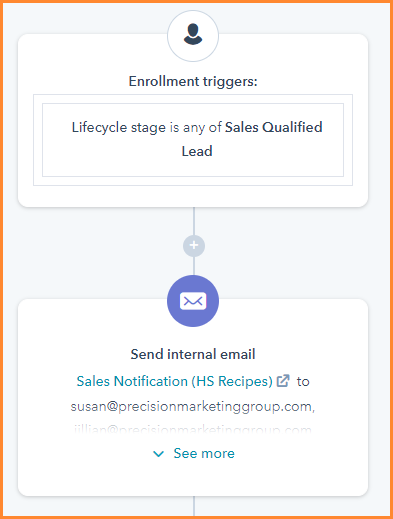
Note that this workflow example is very simple. You can beef it up as needed if you have a more complex sales team structure, like different teams assigned to different territories. You can also send text messages to your reps if that's their preference.
Saving Your Sales Team Time
Meeting Links
How much time is wasted simply trying to set up a meeting time with a lead that works for both parties? Probably the equivalent of four back and forth emails. HubSpot has a free app that makes it super easy for a lead to schedule a meeting with individuals on your sales team. And it involves zero back and forth communication.
Once the lead clicks on the meeting link, they get to a page where they can select a meeting duration and time (based on the salesperson's availability). Then they are prompted to fill out a form. See below:
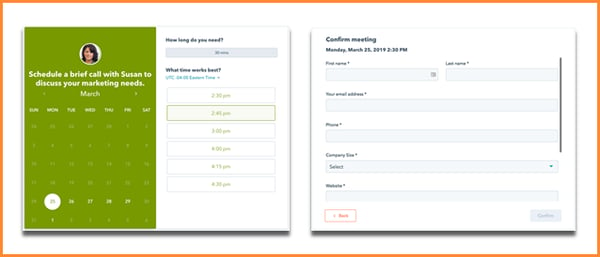
Once the lead submits the form, a meeting invite is automatically sent to both the salesperson’s calendar and the lead's calendar! You can add the calendar link anywhere that makes sense on your site as a Call-to-Action, and in your sales team’s email signatures.
If you have more than one salesperson taking meetings, you can also configure one of two group options to fit your needs.
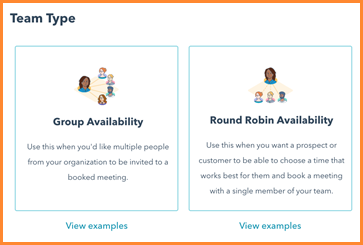
Snippets
On the topic of back and forth emails, HubSpot also includes a convenient tool called Snippets. This feature allows reps to write out and save short blurbs that they use to answer the same questions repeatedly asked by prospects.
Once set up, you can use these snippets in emails, chat, and contact/company records. You activate the snippets by using the shortcut you originally set (typing #meeting) or by inserting it from whichever tool you’re using. Note that you’ll have to integrate your email with HubSpot to access snippets in your email. Find out more about snippets in this HubSpot blog: How to Simplify Your Sales Communication Using Snippets.
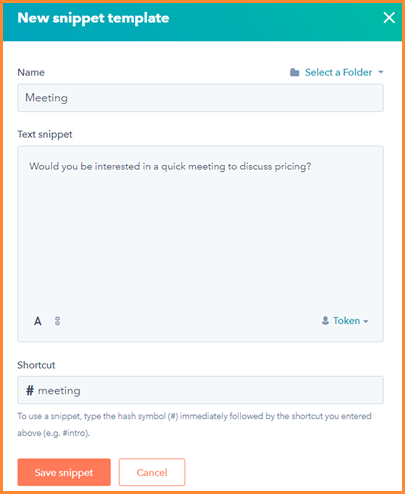
Personalized Communication
Another way to save your sales team time is by introducing them to your leads early on in the nurturing process. In your marketing emails, set the sender name and address to be the lead owner (or HubSpot Owner) using HubSpot's personalization tokens as soon as the lead is known to be—through self-identification or other means—located in a certain territory or perhaps close to being sales-ready. This will give the illusion that the sales person is sending them the emails and soften up the introduction when the time comes to talk sales.
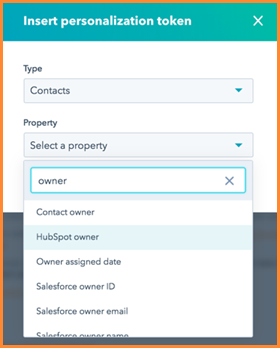
Chat
To piggyback on the personalization tokens above, you can also set up similar functionality in HubSpot Chatflows. These chat pop-ups can be configured to show the specific salesperson that’s assigned to a type of lead. You can set up smart lists for each lead based on your internal lead assignments, whether it be territory, product/service type, or other criteria.
Email Integration
The HubSpot email integration is among the coolest features because it allows your salespeople to manage almost everything mentioned in this article right from your inbox. It looks like this:
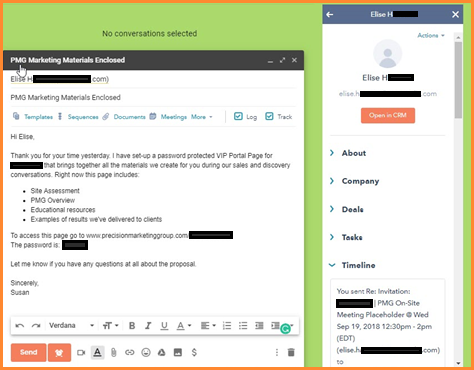
Note how you can access your Templates, Snippets, enroll people directly into Sequences, set meetings, and log and monitor lead actions from email. Even better, the integration allows you to see when someone opens your emails and reads your documents.
Lead Management
Deal Pipelines
Use Deal Stages to build Deal Pipelines to give your team real-time visibility into the sales funnel and projected revenue. Sales people can visually move leads from first contact to close in various stages, making it a really user-friendly function of HubSpot Sales.
You can create multiple pipelines to fit your needs if different products or services require different pipelines. For example, you can have a pipeline for new business deals and another for upselling current clients. Here’s a sample visual on a pipeline from HubSpot. We would show you ours, but it has top secret client information.
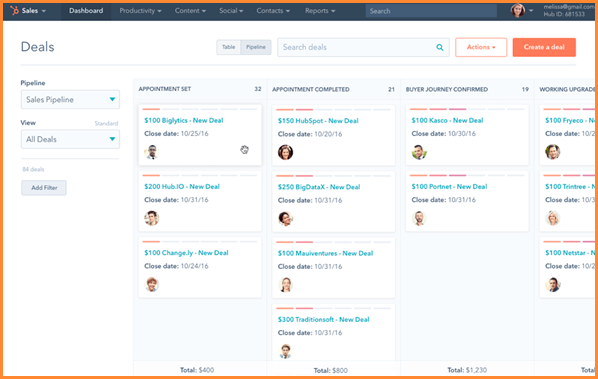
Sequences
Was the first sales call not fruitful? Does the lead need more time? HubSpot Sequences can help salespeople stay on top of leads that are not quite ready by taking email workflows to the next level. They can be made up of emails and tasks that automatically follow up with the lead on behalf of the salesperson, and they can be customized according to the lead’s perceived stage in the sales process. For example, if there’s a lack of decision, the sequence can consist of follow-up nurturing emails and tasks that remind the salesperson to follow up via a call.
Note that enrolling a contact into a sequence does not happen automatically, as this is a form of one-to-one communication and the salesperson is required to identify who joins a sequence and when. But you can also create multiple sequences to help nurture any lead—and HubSpot offers some great templates to help you get the job done. All the salesperson needs to do is just enroll the lead in the sequence that best fits their situation. Here’s a great overview of the tool from the HubSpot Academy:
Closing the Loop
Dashboards
Probably the most important part of sales and marketing alignment is making sure both teams have real-time access to the status of the lead funnel so they can keep track of any service level agreement (SLA) details they may have in place to hold themselves accountable. HubSpot has created dashboard templates that can provide multiple views of lead status. But, of course, you can also create custom dashboards to fit your needs.
As you can see, HubSpot has a ton of great features to help you automate many aspects of marketing and sales alignment. Are you taking advantage of these features so your teams spend more time on growing the business versus manual tasks? If you need help, we’re here!



